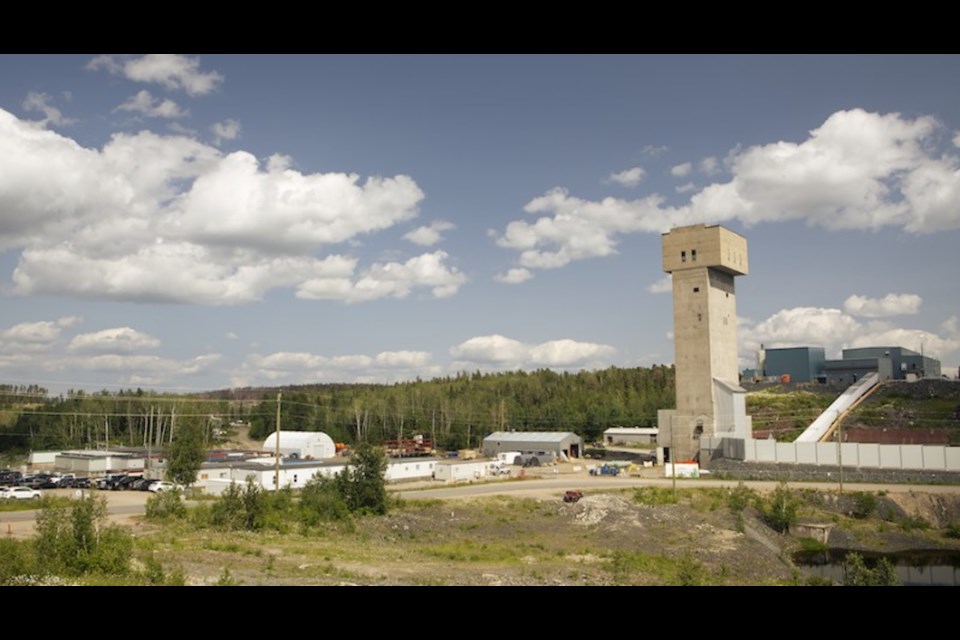Shane Williams and West Red Lake Gold Mines are in no big rush to put the dormant Madsen Mine back into production.
The Vancouver gold company intends to take a methodical approach to set things right and deep dive into the deposit before resuming production at the shuttered underground mine, southwest of the town of Red Lake.
Months and months of underground drilling is on the docket to get a more accurate picture of the ore body and a better impression of the area’s geology, before they’ll even entertain the thought of a restart, said Williams, the company's president-CEO.
"You're still 18 to 24 months before we even think about switching the thing back on.”
Williams expects his company is likely a year out from doing a "big hire."
Once they find their footing, Williams said their intention is build a mining company “of scale” in the prolific northwestern Ontario gold camp and restore confidence in a deposit that was mismanaged.
"It's gonna take some time but we see the opportunity at Madsen… to start that process as we go forward."
Madsen was a revival of an historic mine of the same name, but under the Pure Gold banner, the operation folded 14 months after starting production in August 2021.
Mining and milling halted last October when insolvent Pure Gold entered creditor protection.
The majority of its workforce of 271 were laid off but a core group of 30 remain on site for care and maintenance purposes.
The Red Lake camp is dominated by Australia’s Evolution Mining, with Kinross Gold becoming a player with its pickup of Great Bear Resources’ Dixie Project.
The acquisition of Madsen by a junior miner like West Red Lake Gold Mines seemed to come out of the blue.
Backed by Frank Giustra, a mine financier and a major shareholder, the exploration outfit is quickly transitioning into a gold miner.
West Red Lake already has an early-stage prospect with considerable promise on the west side of Red Lake, dubbed Rowan. It comes with an historic 800,000-ounce resource estimate that’s currently being drilled off. The addition of Madsen gives them two deposits in the camp.
With Madsen, the company picks up a turnkey operation valued at $350 million with a two-ramp underground mine, a 1,275-metre shaft, a tailings facility with excess capacity, a water treatment plan and, especially important, a 800-tonne-per-day processing mill that’s scalable with some investment.
That plays into West Red Lake’s strategy of creating a hub-and-spoke mining and processing model with multiple area deposits feeding the mill.
With so many junior miners with promising properties around Red Lake, the acquisition-minded company sees an “opportunity to consolidate,” said Williams.
"We would like to buy them."
Red Lake is home of some of the world’s richest gold mines. But the geology is notoriously complex with deep, narrow gold veins.
“Historically, it’s a fantastic area for building companies,” said Williams. “The risk-reward is big there. The deposits are very, very high grade.”
But Red Lake can also be a company killer as Pure Gold, and Rubicon Minerals found out, especially when the latter rushed the Phoenix Gold mine project (now owned by Evolution Mining) into production.
The geology there takes a bit of time — and money — to figure out, explained Williams.
One way to de-risk an operation is to have a number of different mines on the go.
“It gives you the ability to mix ores to make sure if you have an issue with one, you got another one.”
Want to read more stories about business in the North? Subscribe to our newsletter.
Williams, the former COO of Skeena Resources, said he’d been working with Giustra's team digging into the background of what went wrong during Pure Gold’s brief, topsy-turvy run.
Heavily debt-financed, the pressure was on Pure Gold management to deliver Madsen to production by a certain date, which was accomplished.
The decision was made to mine the easy-to-access lower-grade gold near surface. But the McVeigh Zone didn’t deliver the grade they needed, Williams said.
In a startling admission last summer, the former CEO of Pure Gold admitted they started mining at the wrong end of the deposit.
Not much was spent on underground or definition drilling, “which is one thing these deposits need: very, very tight drilling," said Williams.
All of the previous operator’s drilling was done from surface.
It costs plenty to drill out these deposits, said Williams, and capital was something Pure Gold lacked.
“Our plan is to go back and starting drilling,” said Williams. “It was never done at the definition that these deposits need.”
Part of West Red Lake’s restart plan involves heading underground to bite into the high-grade end of the deposit, in the deeper South Austin Zone.
Cashed up for exploration, Williams said they’ll carve out underground drill stations next month and spent the next year drilling to map out 12 to 14 months worth of inventory.
“That gives us the opportunity to go in and really probe to the heart of the system,” he said. “The problem with these deposits is when you’re drilling from surface, if you get any deviation, you miss the ore body.
“They’re a very long, deep narrow vein sort of system and so it’s very difficult to pinpoint from surface."
To bolster the team, some respected former Northern Ontario mining executives — Tony Makuch and Duncan Middlemiss — have been added to the board of directors.
Middlemeiss was a steady hand at Wesdome and St. Andrew Goldfields, while Makuch steered Lake Shore Gold and Kirkland Lake Gold, the latter before its takeover by Agnico Eagle.
"These guys are big company builders, obviously,” said Williams.
Establishing the technical side to the board and tapping into their knowledge base will help with the corporate image and de-risking plans, he said.
